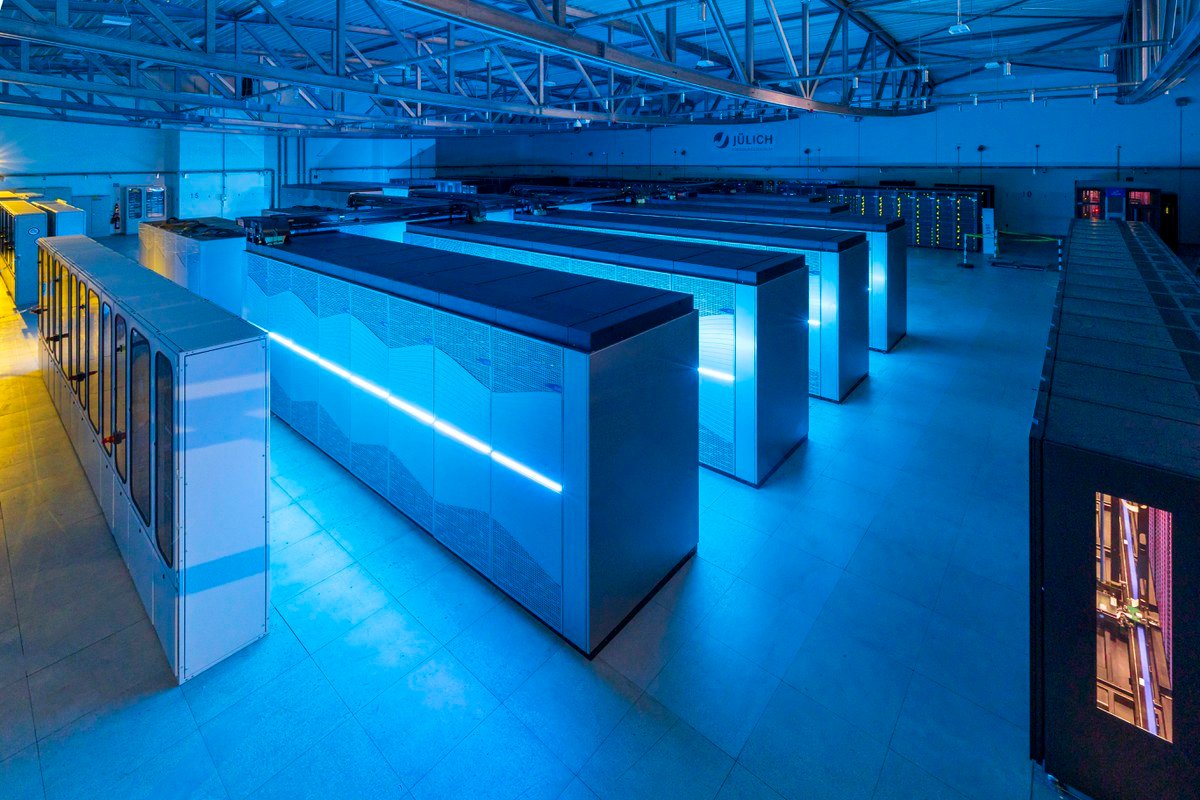Europe is gearing up to launch its first exascale supercomputer, JUPITER, a potential contender for the title of the world’s fastest and most powerful computing machine.

Europe is gearing up to launch its first exascale supercomputer, JUPITER, a potential contender for the title of the world’s fastest and most powerful computing machine.
The supercomputer is expected to perform an astonishing one million times one million times one million arithmetic operations per second, opening the door to unparalleled scientific discoveries and innovations across various fields, from climate change to quantum physics.
Exascale supercomputers represent a new frontier in computing, capable of executing an exaflop or a billion operations per second, equivalent to the combined computing power of 10,000 laptops. Currently, only two exascale supercomputers officially exist worldwide: Frontier at Oak Ridge National Laboratory in Tennessee and Aurora at Argonne National Laboratory in Illinois. However, suspicions linger that China may possess two secret exascale machines yet to be officially ranked.
JUPITER, an acronym for Joint Undertaking Pioneer for Innovative and Transformative Exascale Research, will be constructed at the Jülich Supercomputing Centre in Germany, a collaborative effort between the European Union and private businesses under the European High-Performance Computing Joint Undertaking (EuroHPC JU).
In a recent interview, Prof. Dr. Dr. Thomas Lippert, the director of the Jülich Supercomputing Centre, shared that JUPITER could potentially be the world’s fastest AI supercomputer for eligible AI applications, boasting over 90 exaflops at 8 bits.
The unique modular design of JUPITER comprises two main components: a Booster Module and a Cluster Module. The Booster Module, powered by almost 24,000 NVIDIA GH200 GPUs, will deliver extreme-scale computing power for artificial intelligence and simulation workloads.
This includes tasks such as training generative AI models capable of creating realistic images and texts. On the other hand, the Cluster Module will employ SiPearl’s new Rhea processor, a European creation, designed to handle complex workloads requiring high memory bandwidth.
Collaborating closely with the European scientific community, JUPITER is a joint effort by ParTec, Eviden, SiPearl, and NVIDIA. The supercomputer aims to provide cutting-edge AI and high-performance computing resources, pushing the boundaries of knowledge and innovation in diverse fields.
The installation of JUPITER is set to commence in early 2024. Users will have the opportunity to test and prepare for the system through the JUPITER Early Access Program, fostering close cooperation among all involved parties to optimize the system for the scientific community.
Philippe Notton, CEO of SiPearl, supplier of custom ARM-based chip designs for JUPITER, suggests that the supercomputer could potentially claim the top spot on the 500 supercomputer list if no other machine surpasses its capabilities.
However, he underscores the importance of managing energy consumption, as the estimated cost of running JUPITER for three years is approximately €500 million, including an annual electricity cost of €100 million. Notton emphasizes that efficiency is not just about having the largest machine but also about managing the associated costs.
As JUPITER gears up for its debut, the global scientific community eagerly anticipates the transformative impact this exascale supercomputer could have on pushing the frontiers of research and innovation across various disciplines.